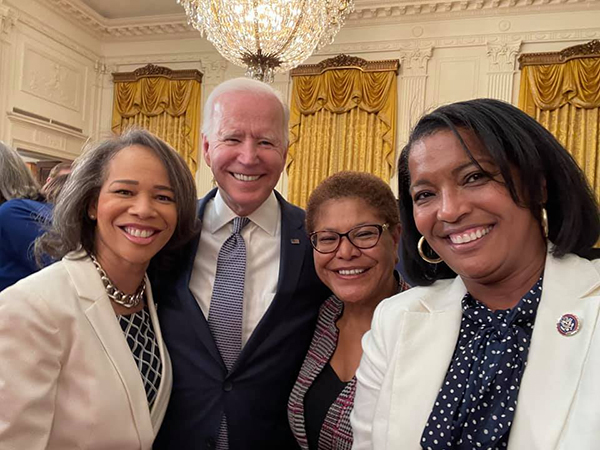By Earl Ofari Hutchinson
Contributing Columnist
It has long been an inside joke for someone to say that Juneteenth was a testament to ignorance. The “ignorance” was that slaves in Texas were supposedly too dumb, ignorant or uninformed — or all three — to realize that two-plus years had passed since they were freed.
Editor’s Note: This column is the first in a two-part series discussing the campaign for a Juneteenth federal holiday (observed June 19), based on the forthcoming book, “The Juneteenth Drama,” by Earl Ofari Hutchinson.
President Abraham Lincoln signed the Emancipation Proclamation on Jan. 1, 1863. As of that day, the enslaved in states in rebellion against the United States were technically freed. Yet, it supposedly took two more years for enslaved Blacks in Texas to figure that out.
This horrible tall tale repeatedly cropped up and became part of the sometimes amusing folklore around Juneteenth. It was just that, folklore, not fact.
A substantial amount of oral history was done with and about slaves in Texas and other states. The former slaves insisted that they were not dumb or hoodwinked about slavery’s technical end with Lincoln’s proclamation.
Felix Haywood, a slave in Texas during the Civil War, debunked the myth of slave ignorance in one of the oral history interviews that was collected, saying, “We knowed what was goin’ on in [the war] all the time. We all felt like heroes, and nobody had made us that way but ourselves.”
The profound importance of Juneteenth began the moment Union Major Gen. Gordon Granger read his proclamation Order No. 3. The order had absolutely nothing to do with informing the former slaves that they were now free; it spelled out the labor, social and property rights of Blacks, as well as the place of free Blacks within white society.
Granger specified that the order guaranteed “absolute equality of personal rights and rights of property between former masters and slaves.” It further clarified the relationship between slaveholders and the formerly enslaved as one “between employer and hired labor.”
Granger’s other great concern was to make clear what the Union troops and the government were prepared to do to assist the freedmen: As it turned out, very little. In fact, Granger was blunt. They would have to work for wages, and in doing so, “idleness” would not be tolerated, let alone subsidized.
The formerly enslaved knew that. The former slave masters knew it, too. Texas newspapers ran countless stories and editorials, mostly denouncing Lincoln’s Emancipation Proclamation, as well as Granger’s order. That ensured that the order would be widely, if not incessantly, discussed by whites, especially the slave masters. The formerly enslaved Blacks and the many free Blacks did much to spread the word about the new order of race relations.
There was yet another reason Graham had to spell out in harsh and forceful terms the end of slavery. Texas slaveholders and most whites in the state bitterly resisted slavery’s end. They tried every subterfuge from murder and naked terror to even continuing to try to buy and sell slaves. Every stop was pulled out to keep alive the near-dead institution.
The counter to these efforts was a massive show of force by the Union Army and federal officials. They needed the support of the former slaves to finally force the former slave masters to capitulate. To secure that, they imposed a code of relations and a guideline on the status of the Blacks.
The key element was that the Blacks had to be reassured they were truly free laborers with full civil rights and the legal right to own property.
Granger’s order, then, was a pragmatic tact to ensure stability, control and the rule of law. One historian observed, “It’s not that Gen. Granger was giving information to the enslaved people. He was giving it to the masters.”
The order, though, wasn’t the magic tonic to force compliance. The estimate is that 400 Blacks were murdered between 1865 and 1868. The terror was designed to intimidate the former slaves and the death toll was almost certainly far higher.
There was yet another reason for the seeming lag in the Texas slaveholder’s capitulation to emancipation. Texas was a well-established dumping ground slaveholders in other states, such as Mississippi and Alabama, used to move their slave property. The aim was to create as much distance as possible from the Union Army and officials who sought to implement emancipation.
Texas was ideal for that purpose. It was on the far periphery of the South’s slaveocracy. It was still largely frontier and transportation and communication were primitive to non-existent in many parts of the state. Therefore, it was simply convenient to use Texas as a fail-safe area to maintain slavery as long as possible after its formal end. Granger’s added aim, then, with the issuance of the order was to break the back of the last bastion of the slaveocracy.
Thus, it took a special measure, General Order No. 3, to drive that point forcefully home not to the slaves, but their captors.
Earl Ofari Hutchinson is an author and political analyst. He is the host of the weekly Earl Ofari Hutchinson Show on KPFK 90.7 FM Los Angeles and the Pacifica Network Saturdays at 9 a.m.










